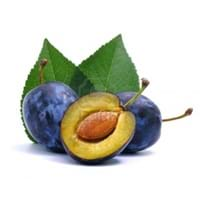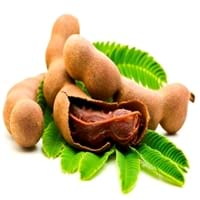Health Benefits
Cancer prevention, Cures gastro-intestinal troubles, Heart care, Increase in haemoglobin, Prevents high blood pressure
Boosts immune system, Boosts respiratory health, Cancer prevention, Digestive aid, Piles treatment
General Benefits
Anti-inflammatory properties, Boosts immune system, Digestive aid, Eye care, Flu treatment, Helps in weight loss, Maintains healthy cholesterol level, Treatment of common cold
Beneficial in improving nerve function, Protects against parasites and worms, Relieves pain
Skin Benefits
Anti-aging benefits, Brightens and lightens complexion, Reduces wrinkles, Skin revitalization, Treatment of dark spots
Anti-aging benefits, Brightens and lightens complexion, Exfoliates skin, Hydrates skin, Treatment of dark spots
Hair Benefits
Prevents hair loss, Promotes longer and healthier hair, Protects hair, Remedy for split ends, Treatment of dandruff
Prevents hair loss
Allergy Symptoms
Abdominal pains, Anaphylaxis, Vomiting
Abdominal pains, Breathing difficulty, Dizziness, Eczema, Fainting, Hives, Itching, Nasal congestion, Swelling of face, Tingling sensation in mouth, Vomiting
Side Effects
Allergic reaction
Decrease in blood sugar levels, Induces acid reflux, Allergic reaction, Tooth decay, May form gallstones
Best Time to Eat
As a snack in the late afternoon, Don't consume at night and before bed, Don't eat after meal, Morning time (before lunch)
Along with meal, As a snack in the late afternoon, Don't consume at night and before bed, Strictly avoid empty stomach
Vitamin B5 (Pantothenic Acid)
Vitamin C (Ascorbic Acid)
Vitamin K (Phyllochinone)
Calories in Fresh Fruit with Peel
Not Available
Calories in Fresh Fruit without Peel
Not Available
Calories in Canned Form
Not Available
Season
Summer
Spring, Summer
Varieties
Merryweather Damson, Shropshire Prune, President plum, Damson farleigh and Damson langley bullace
PKM 1, Urigam, Hasanur, Tumkur prathisthan, DTS 1 and Yogeshwari
Color
Dark purple
Brown, Reddish-brown
Inside Color
Yellow
Brown
Shape
Oval
Curving Cylinder
Taste
Juicy, Sweet, Tart
Sour-Sweet
Soil Type
Clay, Loam, Moist, Sandy loam, Well-drained
Loam, Sandy, Sandy loam, Well-drained
Climatic Conditions
Cold
Humid to dry, Rainfall, Warm to hot climate
Facts about
- The name Damson originates from the original name 'Damacus plum'.
- Damson wine was very popular in 19th century.
- This fruit is often used in jams due to its slightly tart behaviour.
- Tamarind is used to prevent body odor.
- African children use the tamarind seeds in games.
- No cases of tamarind toxicity or allergy reported till date.
Top Producer
United Kingdom
India
Other Countries
Ireland, United States of America
Africa, Australia, Brazil, China, Mexico, Nigeria, Sudan, Taiwan
Top Importer
United States of America
United States of America
Top Exporter
France
Thailand
Botanical Name
Prunus domestica subsp. insititia
Tamarindus indica
Synonym
Not Available
Tamarindo, tamarindus
Subkingdom
Tracheobionta
Tracheobionta
Division
Magnoliophyta
Magnoliophyta
Class
Magnoliopsida
Liliopsida
Species
Prunus domestica subsp. insititia
Tamarindus indica
Generic Group
Not Available
Tamarind Sub
Difference Between Damson and Tamarind
We might think that Damson and Tamarind are similar with respect to nutritional value and health benefits. But the nutrient content of both fruits is different. Damson and Tamarind Facts such as their taste, shape, color, and size are also distinct. The difference between Damson and Tamarind is explained here.
The amount of calories in 100 gm of fresh Damson and Tamarind with peel is 46.00 kcal and Not Available and the amount of calories without peel is Not Available and 239.00 kcal respectively. Thus, Damson and Tamarind belong to Low Calorie Fruits and High Calorie Fruits category.These fruits might or might not differ with respect to their scientific classification. The order of Damson and Tamarind is Rosales and Fabales respectively. Damson belongs to Rosaceae family and Tamarind belongs to Fabaceae family. Damson belongs to Prunus genus of Prunus domestica subsp. insititia species and Tamarind belongs to Tamarindus genus of Tamarindus indica species. Beings plants, both fruits belong to Plantae Kingdom.









